True or false: our brains are wired to forget.
True or false: we learn best with focused, repetitive practice.
True or false: retrieval and reflection should happen once at the end of a learning experience.
The answers might surprise you. In our recent webinar, Katrina Kennedy, author of Learning That Lasts and founder of KatrinaKennedy.com, led an engaging and practical session on reflection as a driver of retention and performance. Here’s the crux: We don’t learn from experience alone; we learn from reflecting on that experience—before, during, and after it happens.
Are our brains wired to forget? Yep. Attention is finite, and most inputs never make it to long-term memory. Do we learn best with focused, repetitive practice? Not necessarily. It certainly isn’t the gold standard. Research favors varied practice that’s spaced over time and interleaved—a new word worth adding to your learning and development (L&D) toolkit. Interleaved means alternating practice among different but related skills (think “interwoven”), which strengthens discrimination, transfer, and recall better than repeating the same thing over and over. Should retrieval and reflection be saved for the end? Absolutely not. If—at the last minute of a learning session—you tack on a quick “one takeaway moment,” it’s likely to be rushed, skipped, or utterly overlooked. For the best results, weave (or interleave) reflection into your training at multiple points.
And did you know that 15 minutes is the magical, post-session reflection allotment? Isn’t that fascinating? Fifteen minutes of focused reflection time after a full day of learning significantly boosts both recall and performance. But even if you don’t have 15 minutes, research shows that any amount of reflection time helps. Even one to three minutes can create a noticeable benefit. They don’t even have to be consecutive. Small reflections completed throughout a program can also add up to durable learning.
You start with a little something called preflection, which is when you ask learners to think about a learning experience before it happens. A question like, “What would make the session worthwhile for you?” would be perfect. Preflection activates prior knowledge, sets purpose, and primes attention so new content has something to connect to. It’s a brilliant, magical practice that starts the learning process before it even begins. From there, keep cycling learners through brief rounds of retrieval. Ask them to recall something from the last segment. Then, ask how that information will be used in their lives, which is reflection.
As an L&D professional, you may need to be reminded that not everyone learns the way you do. Most trainers and facilitators tend to be good learners. Many people need structure and prompts to reflect effectively. A handy mnemonic for building reflection into your experiences is SWATS:
S—Structure: Give a clear frame. Instead of “reflect for two minutes,” try a specific prompt or template.
W—Write it down: Use pen and paper, a keyboard, or a voice note, whatever lowers barriers. Externalizing thoughts deepens processing.
A—Ask before you tell: Invite learners to name value and takeaways before you summarize. Ownership beats passive receipt.
T—Time: Protect quiet time. Reflection can’t happen if the calendar notification is already pulling people into the next meeting.
S—Stop talking: Silence is a critical tool. Many learners need calm to think.
Use these easy, low-prep activities during live, virtual, or self-paced learning:
- Four Corners (I liked / I learned / I want / I will). Give learners a sheet (or slide) divided into four labeled boxes. The top two (“liked” and “learned”) capture retrieval; the bottom two (“want” and “will”) point forward to application. Two to five quiet minutes is really all you need. Use it at midpoints and again at the end.
- Wonder Wall. Pose a single question: What are you wondering about now? Then collect responses on a shared slide, a digital whiteboard, or in chat. Asking for “wonders” lowers the social barrier more than asking for “questions,” and it surfaces the rich, actionable curiosities that should shape your debrief, your follow-ups, or your next sprint of content.
- Spinning Wheel of Wonder. Create a simple “wheel” slide with prompts such as *“I was surprised by…,” “On Monday I will…,” “One misconception I’ll avoid is…,” “A connection I see is…” Spin (or just pick) and have learners respond in the chat or break out into small groups. It’s playful, fast, and keeps the reflection load varied and interleaved across different cognitive moves.
Nudge after the event. A next-day prompt that asks learners what they remember or what they would try that week can be powerful. It turns insights into action. Over time, these post-session touches create the conditions for durable learning—knowledge that transfers and persists.
Taking time to reflect on performance can rival additional repetitions of that performance. That’s not an excuse to practice less—it’s a reminder to practice smarter. Visualization, journaling, and guided debriefs are legitimate forms of work when the goal is long-term capability.
If you’re ready to make reflection a habit in your organization—but need help weaving it into journeys, programs, or compliance experiences without adding bloat—our learning strategy services team can partner with you. We design experience architectures that balance content, practice, and reflection; build interleaved pathways; and craft nudging ecosystems that turn insights into measurable performance.
Click here to learn more about our learning strategy services and watch the full webinar below.
_______________
Disclaimer: The ideas, perspectives, and strategies shared in this article reflect the expertise of our featured speaker, Katrina Kennedy. Be sure to follow her on LinkedIn to explore more of her insights.







